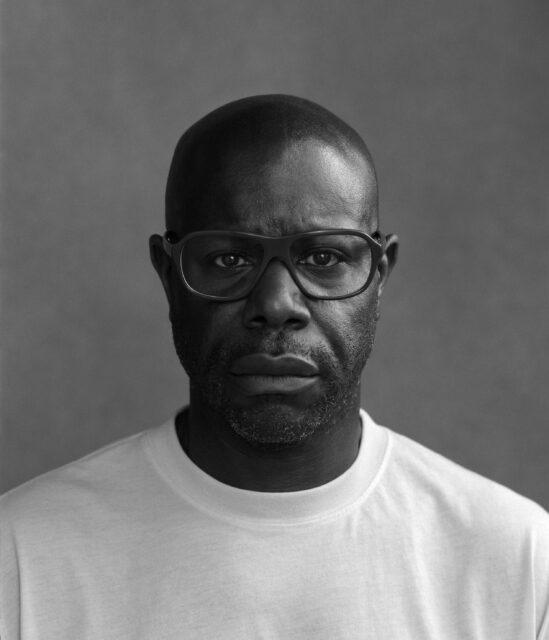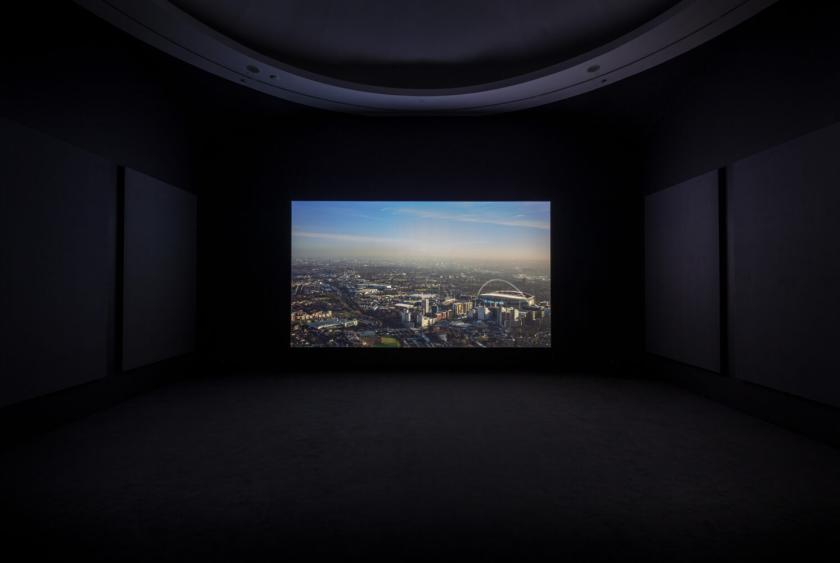The fire which engulfed Grenfell Tower in London’s North Kensington on 14 June, 2017, with a death toll of 72, is still under investigation. The dead were largely recent immigrants to the UK. The tragedy, it’s clear now, was caused by an unholy mixture of neglect, racism, greed and corruption. There’s been much shameful denial and buck-passing, and the issues around the building’s shockingly inadequate cladding haven’t led to much action elsewhere.
Steve McQueen’s film, now showing in a continuous programme at the Serpentine Gallery, addresses these issues with a mixture of anger and compassion – and with a simplicity and grace that brings the tragedy to attention in a remarkable way. It comes straight from the artist’s heart, and cannot fail to touch all those who gather to watch it.
This is no ordinary film show. It’s more of a ritual of reflection and remembrance, experienced collectively in order to magnify the sum of the emotions evoked by McQueen’s 20-minute, single-shot film. The audience gathers outside, and then in an antechamber some 10 minutes before the film is screened. We no doubt all arrive with an image of the inferno, and the suffering of those who were trapped in the tower. There is a palpable feeling of attending an event that will pull everyone into a maelstrom of grief and horror. We are quietly ushered into the purpose-built screening room, a perfection of sobriety. There is a white screen. We wait until everyone has found a seat. Once again, there is a sense of being led on a journey into darkness.
The film starts with a very slow helicopter shot, moving across the countryside and outer suburbs northwest of London. There is the sound of traffic, birdsong, police sirens. The advance towards the city feels inexorable. No voice or voices, no front titles. It goes on and on.
Eventually as we recognise Wembley Stadium and the giant white arch above it, Grenfell Tower becomes visible in the distance, right in the middle of the frame. It’s as if our gaze and our emotions were being drawn in, closer and closer. The traffic noise is more differentiated, as the camera drops down in altitude.
 When we finally reach North Kensington and the tower, it’s as if we've entered a space that is both sacred and damned. The sound fades away, and in shocking and reverential silence, we are taken on a series of continuous circular and gentle tracking shots around the fire-damaged building. We go round and round, aware at first of the blackened walls and window frames. The interiors of the destroyed flats are in semi-darkness at first, and as the sun lowers in the sky, the rays illuminate something of the tower’s interior – piles of plastic bags containing debris stacked up in the apartments.
When we finally reach North Kensington and the tower, it’s as if we've entered a space that is both sacred and damned. The sound fades away, and in shocking and reverential silence, we are taken on a series of continuous circular and gentle tracking shots around the fire-damaged building. We go round and round, aware at first of the blackened walls and window frames. The interiors of the destroyed flats are in semi-darkness at first, and as the sun lowers in the sky, the rays illuminate something of the tower’s interior – piles of plastic bags containing debris stacked up in the apartments.
At no point are there any effects, cheap tricks, or attempts at creating sensation. Just humility, respect, compassion. And the horror of it all. This is the work of an artist, who has sometimes forced us, as in 12 Years a Slave (2013), to watch the unwatchable, but here, he allows the imagination free rein. The slow funereal whirl around the tower is both a dance and a prayer for the dead. The grace with which McQueen (pictured above) treats the subject gives the work a depth and power that’s undeniably stirring.
The circling lasts long enough for the tower’s wounds and ghosts to speak loud and clear, albeit in total silence, and at each turn of the camera’s gaze, a different layer of meaning and emotion offers itself up to the viewer. Towards the end, the camera’s circling grows a little wider, and encompasses more than the four elevations of the tower itself: for those who know London a little, the swooping white Victorian crescents of Notting Hill and Holland Park become visible. So close, those much better-off inhabitants of the Borough of Kensington and Chelsea, the local authority responsible for Grenfell. The gross inequalities of contemporary British society exposed, without any specific charge being laid at the door of those who should know better. The power of McQueen’s Grenfell lies in the absence of overt finger-pointing, and the accusation the film expresses so vividly is all the stronger for it.
Art should open our eyes, and our hearts. Grenfell does just that. It's a wonderful piece of political art, and the experience of seeing it in a dark room at the Serpentine Gallery, in the company of others is unforgettable. The film draws us into the abyss, and yet the experience is, paradoxically, uplifting. Such is the essential quality of soul.
- Grenfell by Steve McQueen at the Serpentine Gallery, London until 10 May. Bookings only, free entry
- More visual arts reviews on theartsdesk









![SEX MONEY RACE RELIGION [2016] by Gilbert and George. Installation shot of Gilbert & George 21ST CENTURY PICTURES Hayward Gallery](/sites/default/files/styles/thumbnail_125_x_125_/public/mastimages/Gilbert%20%26%20George_%2021ST%20CENTURY%20PICTURES.%20SEX%20MONEY%20RACE%20RELIGION%20%5B2016%5D.%20Photo_%20Mark%20Blower.%20Courtesy%20of%20the%20Gilbert%20%26%20George%20and%20the%20Hayward%20Gallery._0.jpg?itok=3oW-Y84i)





Add comment